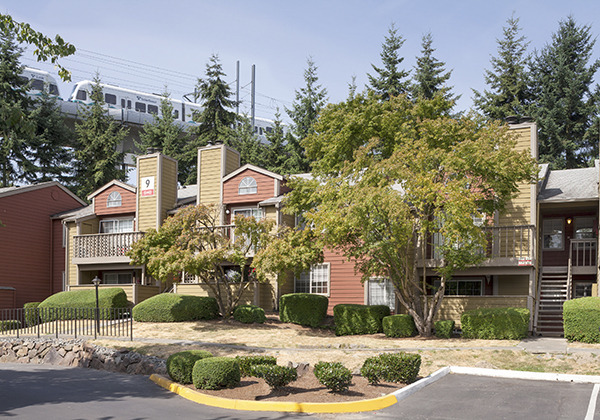This past Thursday, King County Executive Dow Constantine announced a plan to build 2,200 affordable housing units near light rail stations in the next six years. The way the plan works: Sound Transit lends its AAA credit rating so that the King County Housing Authority (KCHA) can take out low-cost loans to boost its affordable housing portfolios. The money is borrowed against future lodging tax revenues, which Olympia recently authorized with a new law.

If last year’s moves are any guide, KCHA seems focused on a preservation strategy. Last October, it announced the purchase of the 95-unit Corinthian Apartments and the 190-unit The Villages at South Station building near Tukwila International Boulevard Station (a Link light rail station).
Buying existing buildings should lead to quicker turnaround and—if done judiciously—lower per unit cost than building new construction. The $29.3 million paid for The Villages’ 190 units works out to $154,211 per unit, but KCHA guarantees only half the units at 80% area median income. Apparently the other half will be market rate. The $10.12 million paid for Corinthian works out to $106,526 per unit, plus rehabilitation costs. New construction often costs much more per unit. However, preserving existing buildings doesn’t expand the overall housing supply (barring a scenario where the alternative is existing housing being replaced with a non residential use). Preservation is helpful in that it guarantees some housing remains affordable, but it isn’t necessarily a strategy for housing growth.
Of course we are only talking about 2,200 units which is a drop in the bucket in the the total metropolitan Seattle housing market, so no matter the strategy the impact may not be particularly far-reaching. It’d be great to see a more comprehensive approach to social housing that guarantees a large boost—say in the neighborhood of 100,000 new units—geared to the working class. That would take some doing.
This latest effort by King County is a start. I’d wager most subsidized housing applicants would appreciate light rail access to guarantee affordable transport in addition to housing. We should applaud the effort.
Doug Trumm is publisher of The Urbanist. An Urbanist writer since 2015, he dreams of pedestrian streets, bus lanes, and a mass-timber building spree to end our housing crisis. He graduated from the Evans School of Public Policy and Governance at the University of Washington in 2019. He lives in Seattle's Fremont neighborhood and loves to explore the city by foot and by bike.


